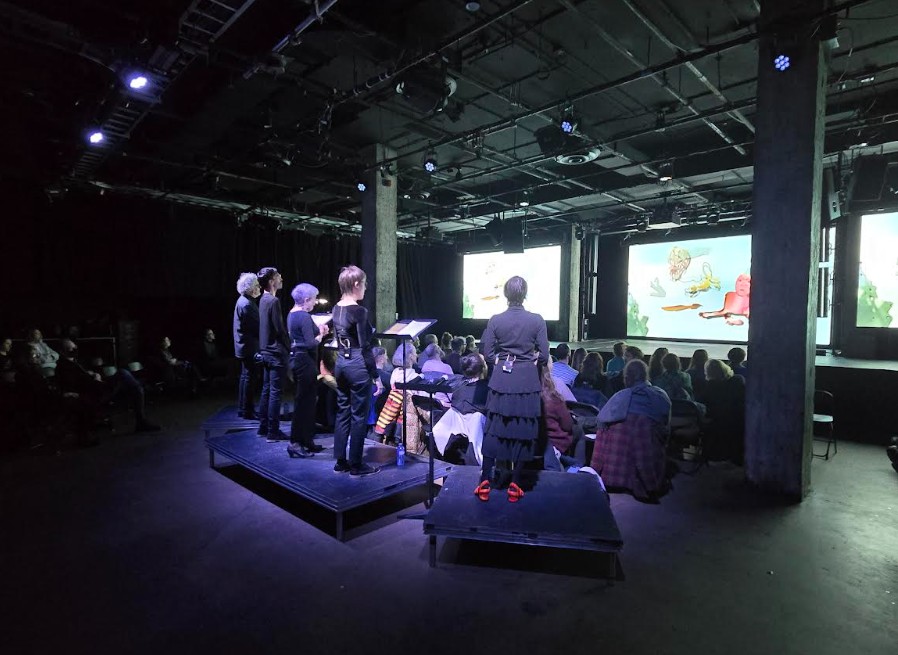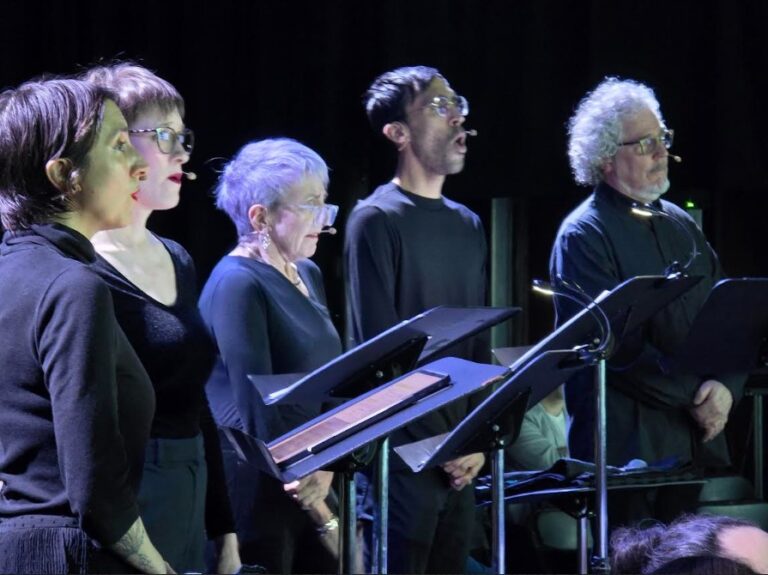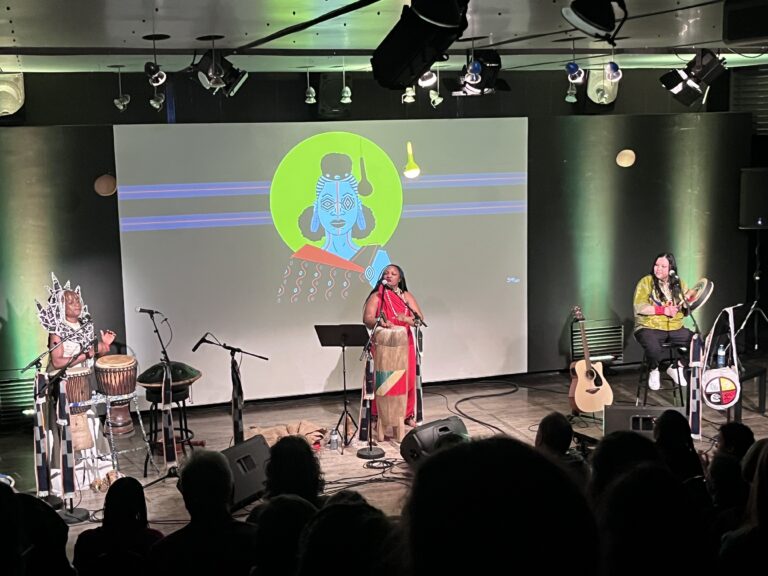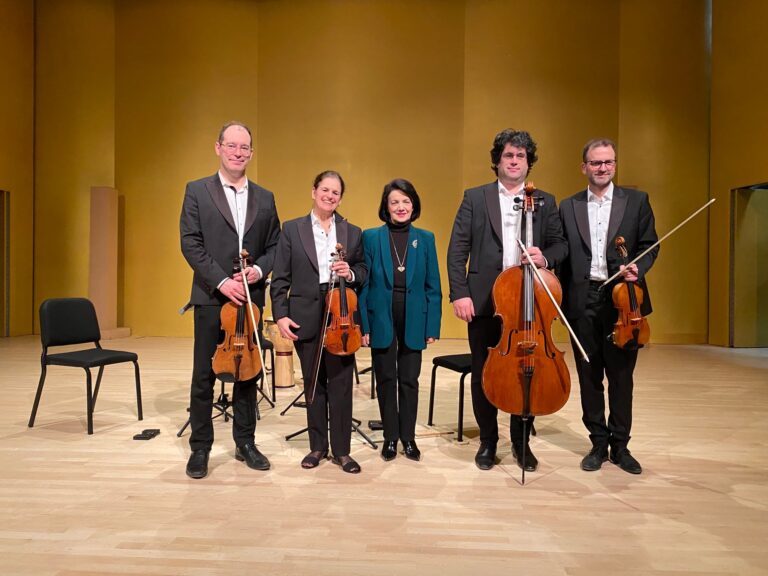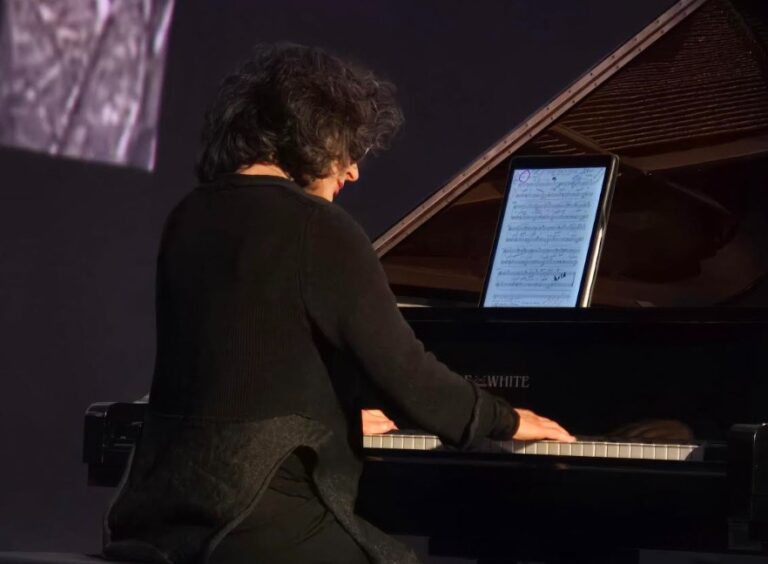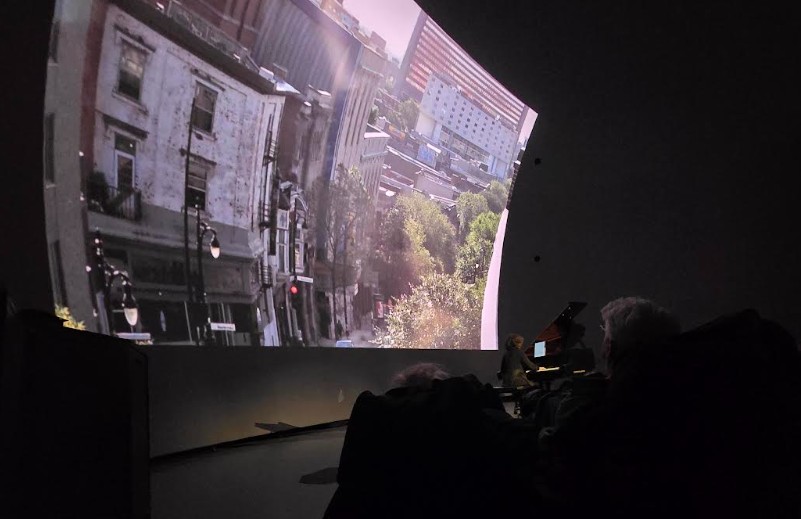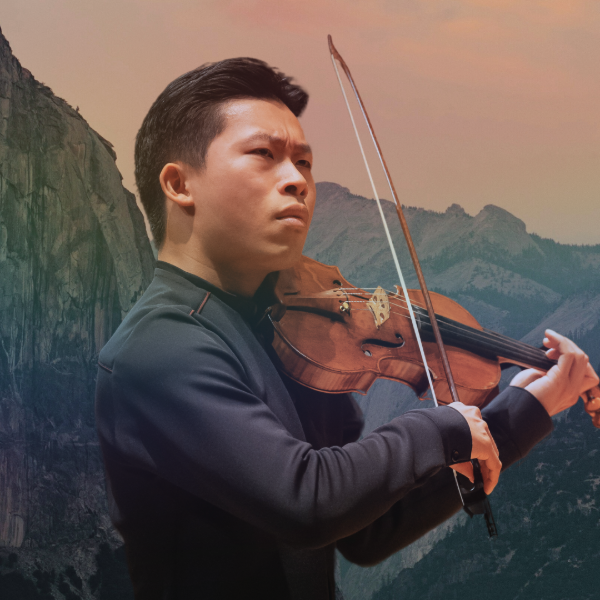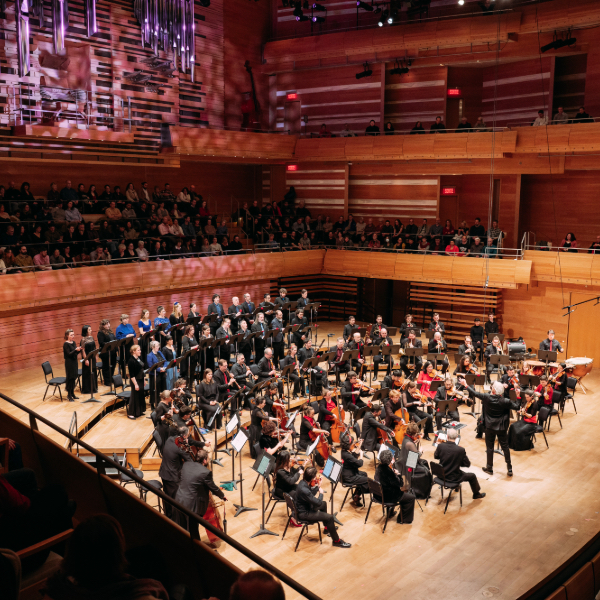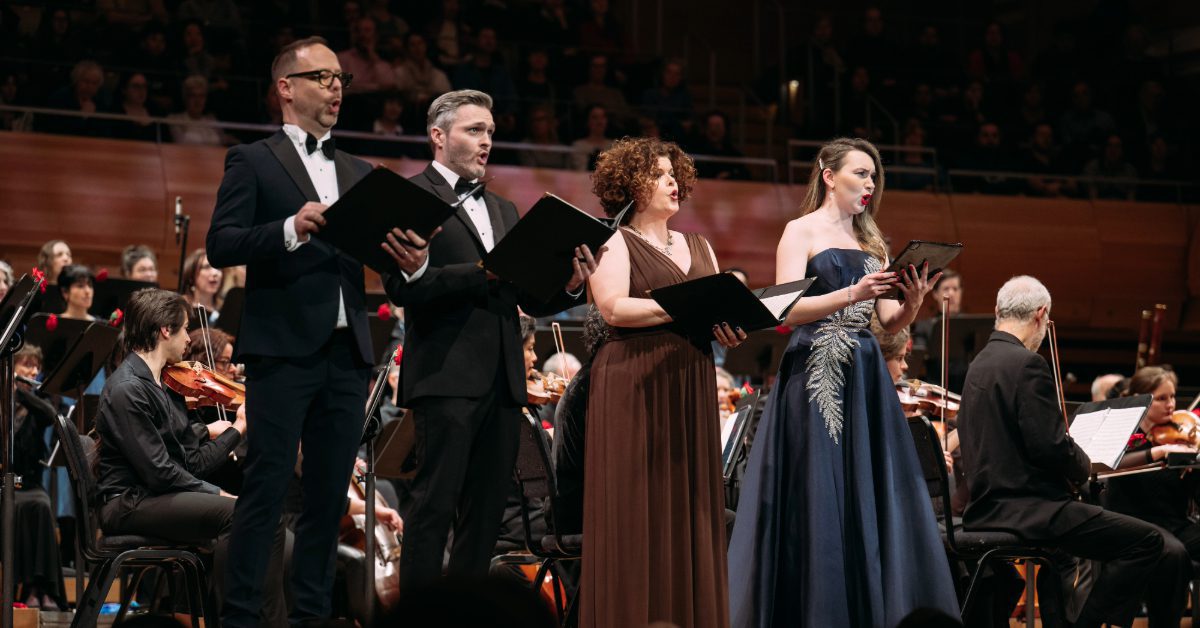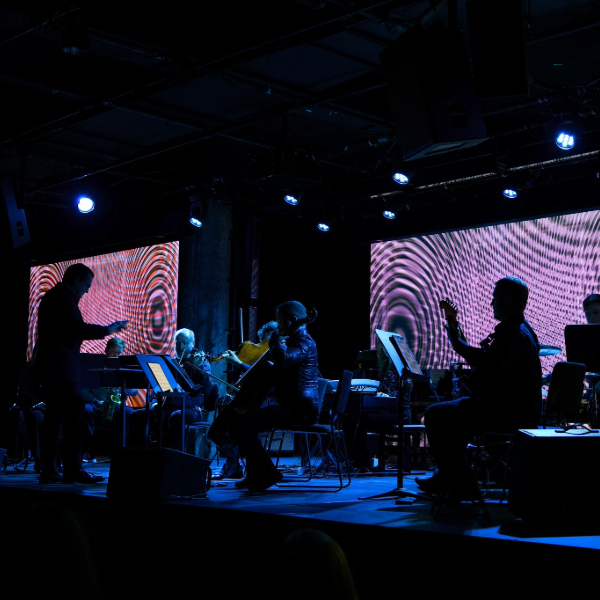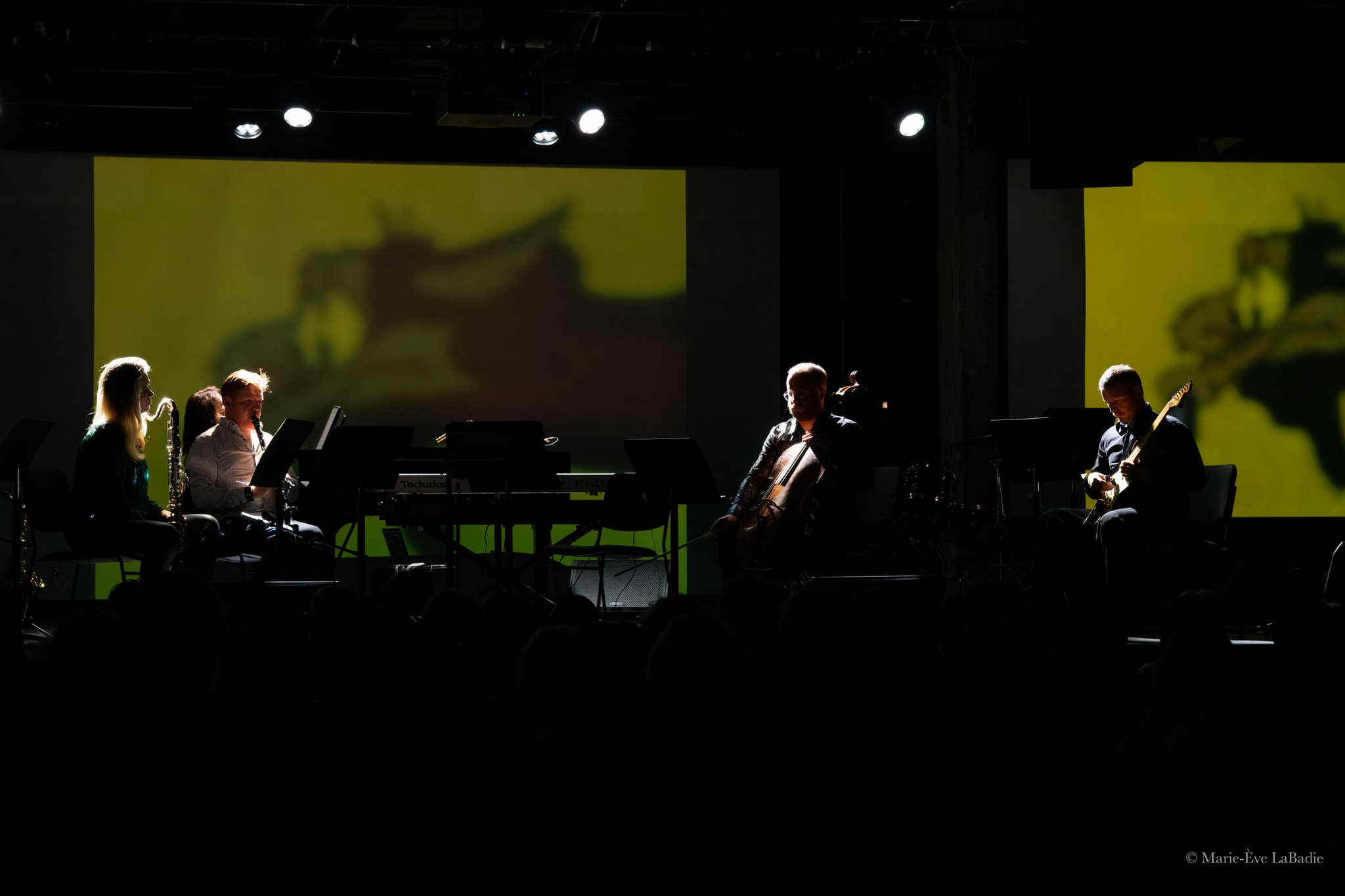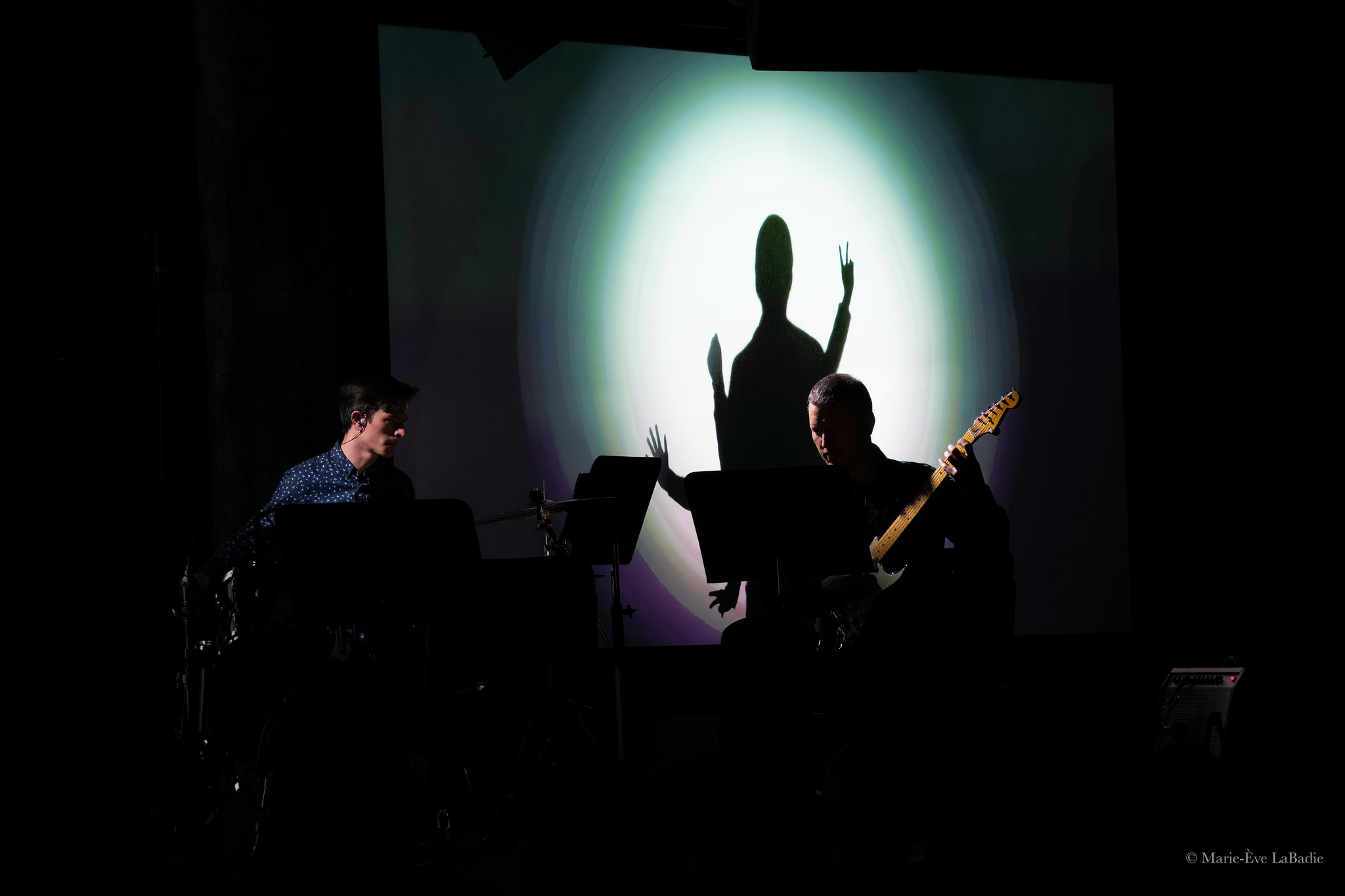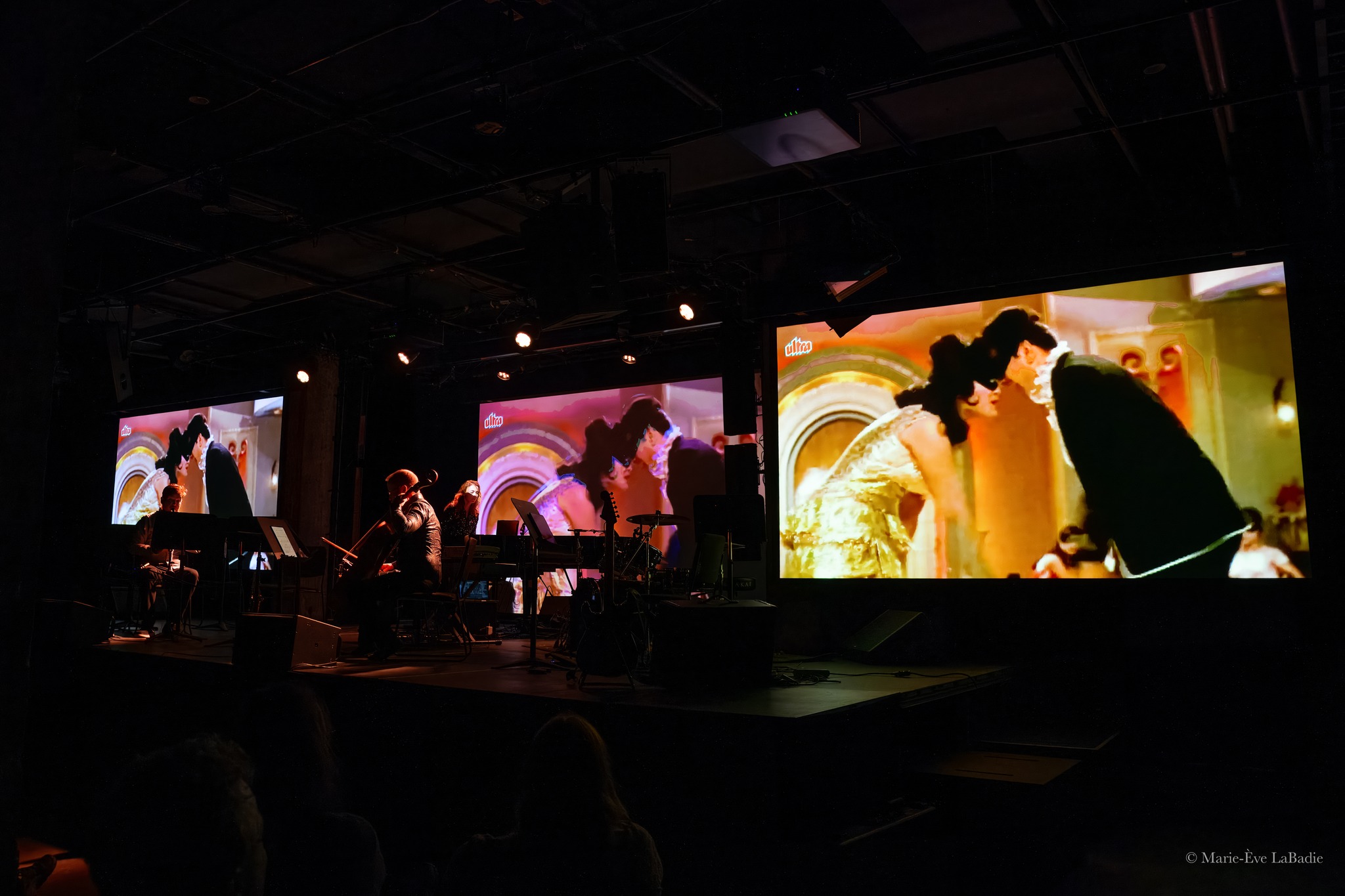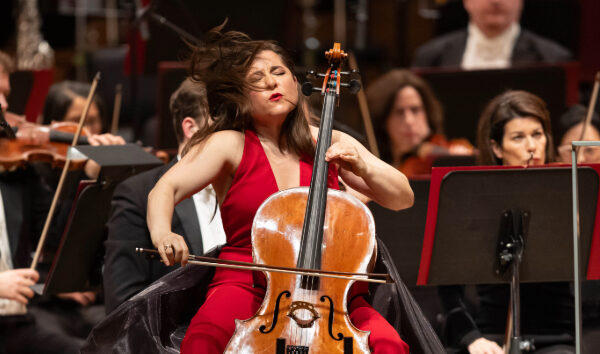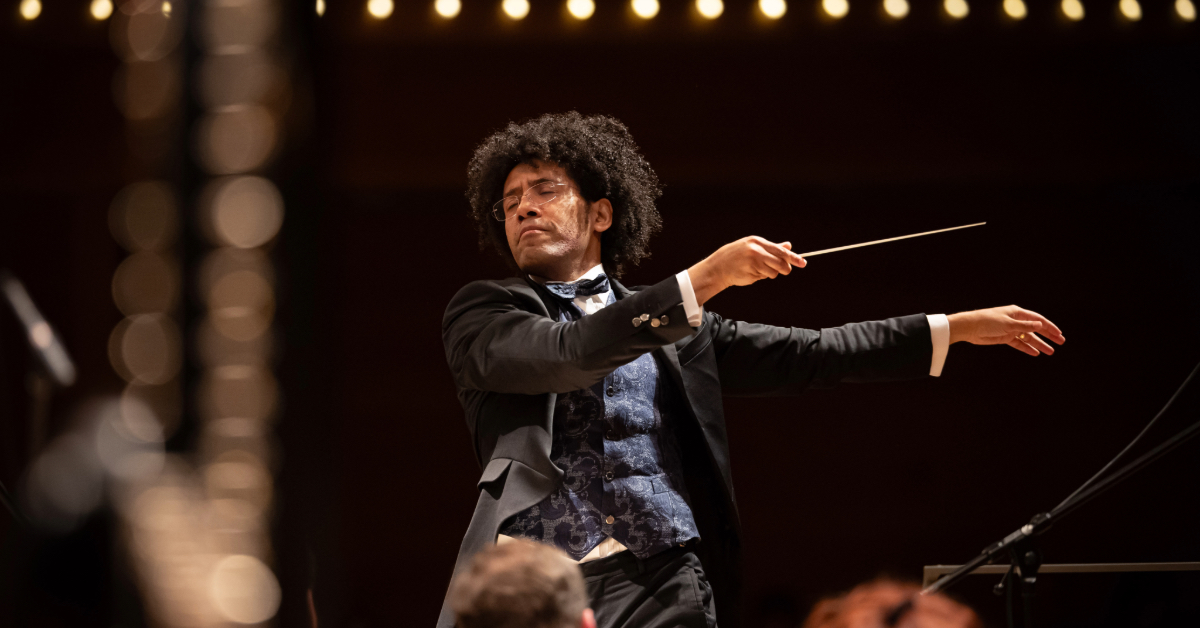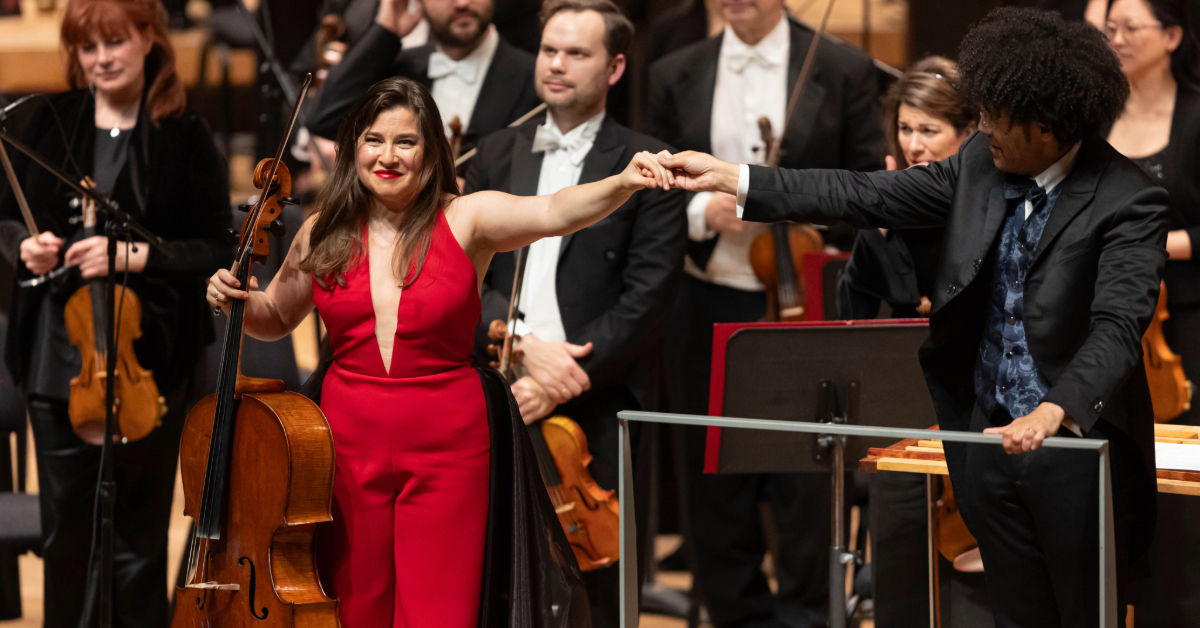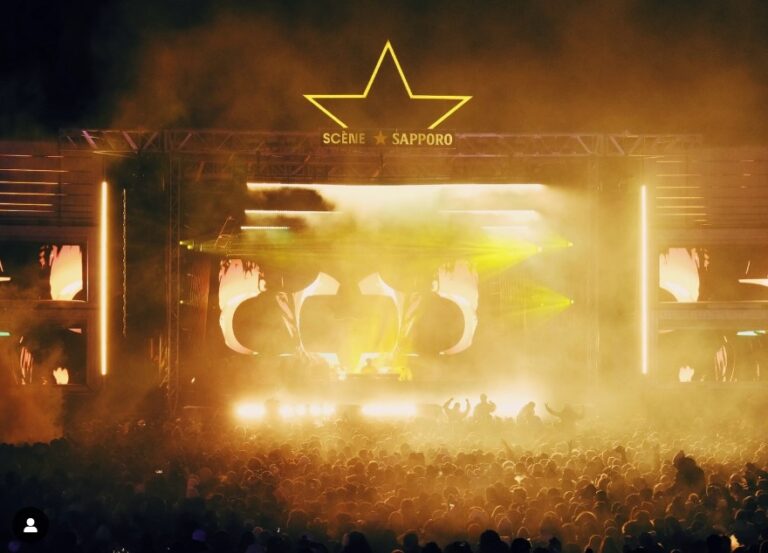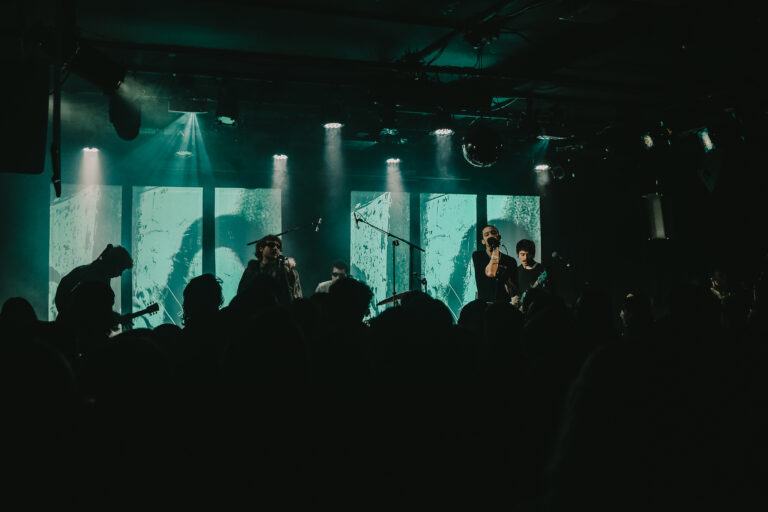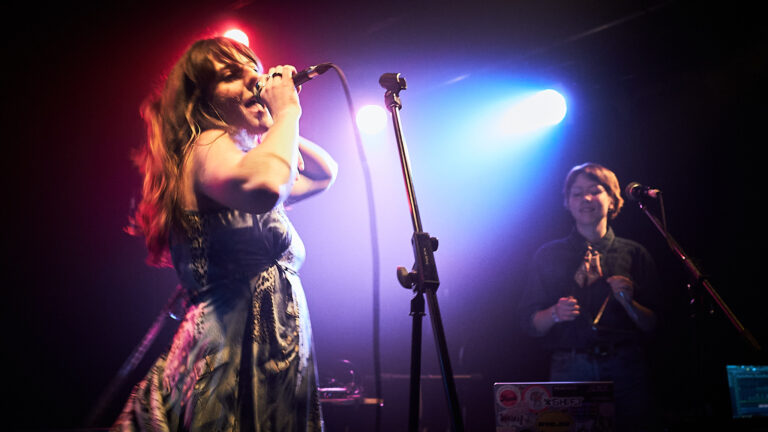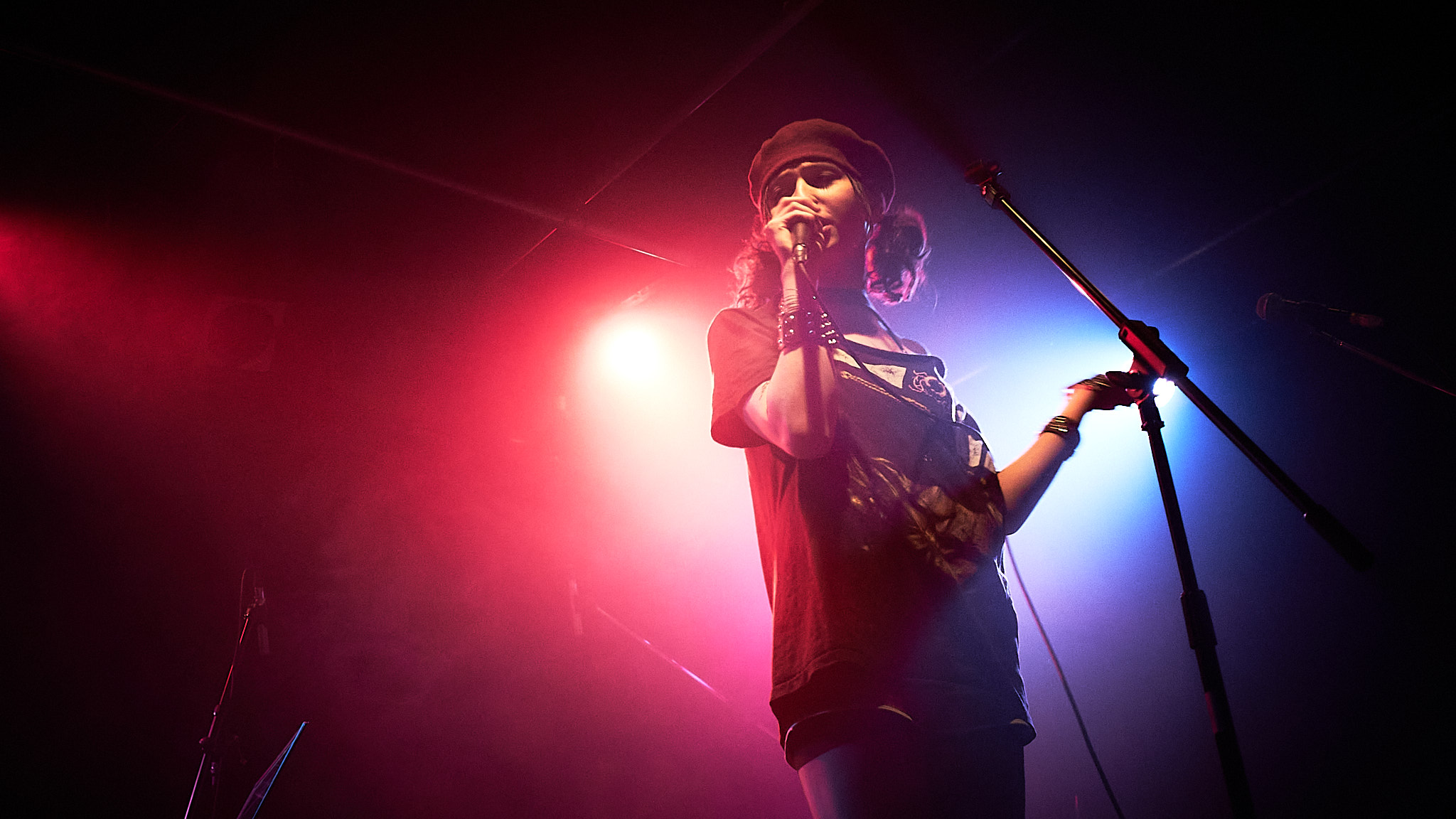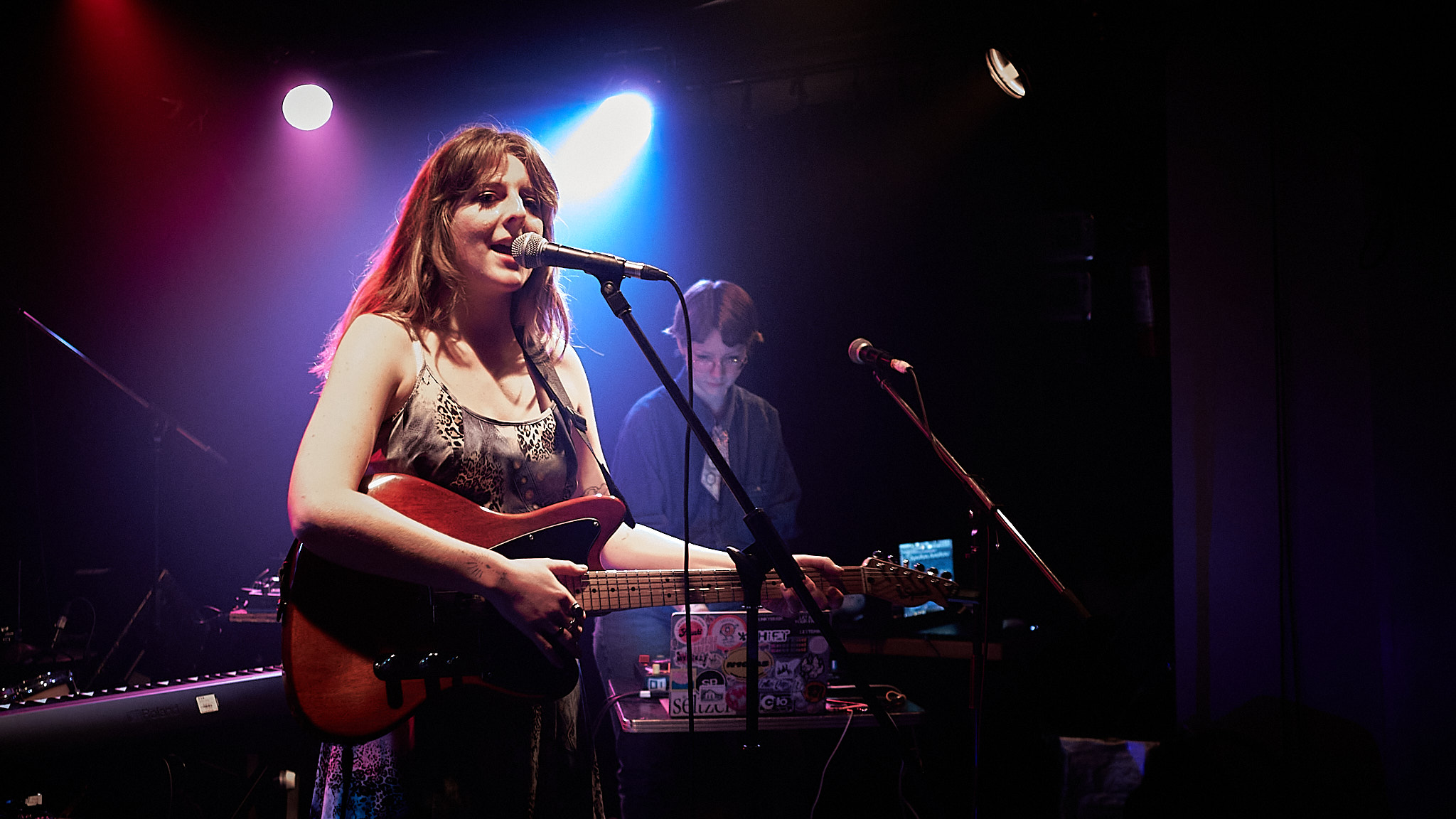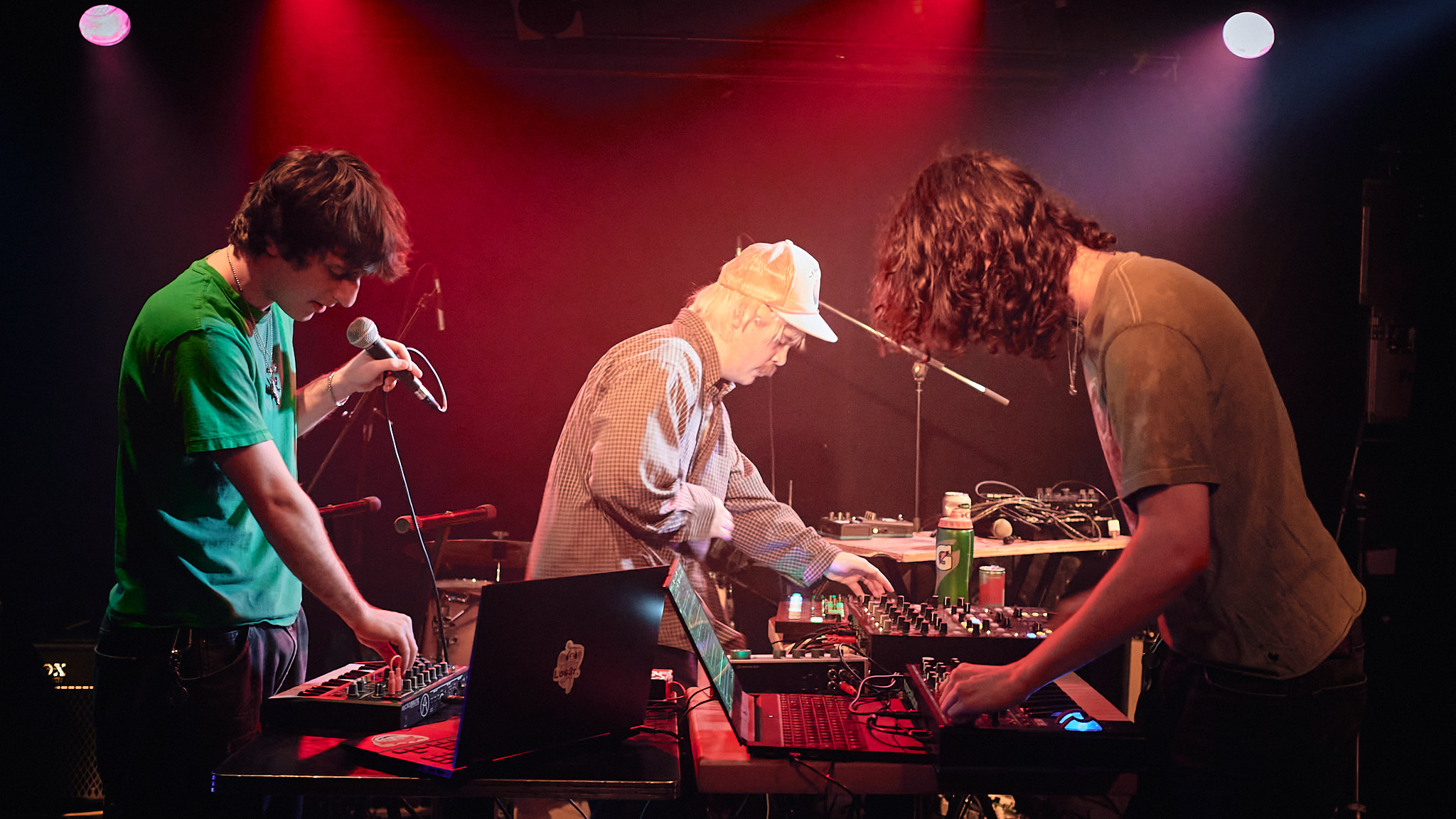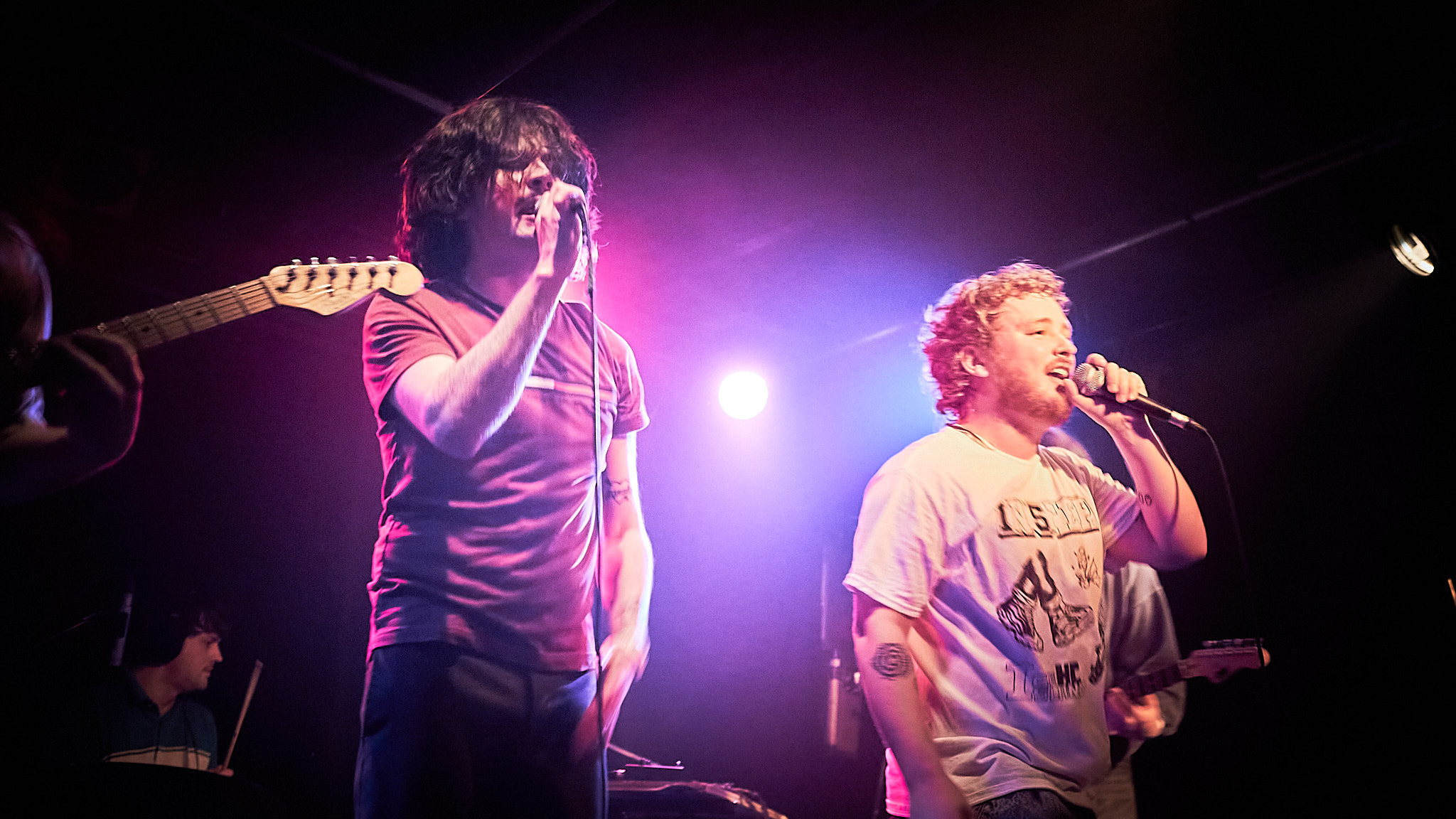On a historically stormy evening at the Society for Arts and Technology, M/NM nevertheless honored the biennial’s theme: the meeting of image and music. The program ¡Némangerie mâchée! attracted a highly motivated audience, and for good reason: this superb video-voice performance must be presented to the public again, given its real unifying potential. Together, vocal ensemble Phth and visual artist Beth Frey create a whimsical, sometimes hilarious world of humanoid mutants, expressed through the 5 singers, improvisers and seasoned onomatopists.
From left to right, looking behind the audience where the performers are: Sarah Albu, Elizabeth Lima, Kathy Kennedy, Gabriel Dharmoo, David Cronkite together develop a hallucinatory vocabulary in which singing and all the other sounds coming from the human body find artistic coherence: borborygms, onomatopoeia, croaks, chirps, cries, baby cries, greasy laughter and other sounds of our lives blend with romantic or baroque lyrical singing, jazz singing, barbershop, doo-wop or other well-known and tried-and-tested vocal practices. Very cool!
We have to admit that this avant-garde lexicon has been enriched by its practitioners over the last few decades, and that it is now obsolete to consider this practice as an experimental fantasy. On the contrary, these augmented singing techniques are making a major contribution to real advances in music today, here and now.
¡Némangerie mâchée! projects a series of video tableaux in which the strange creatures express themselves vocally, a kind of improvised lipsync that never ceases to captivate the audience until the end of the performance.
“The formless, chromatic nature of Beth’s creatures,” state the program notes, ”shares striking conceptual and sensory echoes with their bizarre voicing by Phth, known for a sonic palette that welcomes the organic beauty and ugliness of sound without discrimination.”
Beth Frey’s art-video is perfectly matched to the work of the performers and improvisers, expressing themselves in real time and drawing on their profound knowledge as singers.
Absurdist humor is not the only cardinal virtue of ¡Némangerie mâchée! Through the prism of the outright laughter induced by this performance, other sensitive emotions and perceptions emerge: pain, sorrow, panic, astonishment, tolerance of difference, you name it.
Can’t wait for the sequel!
